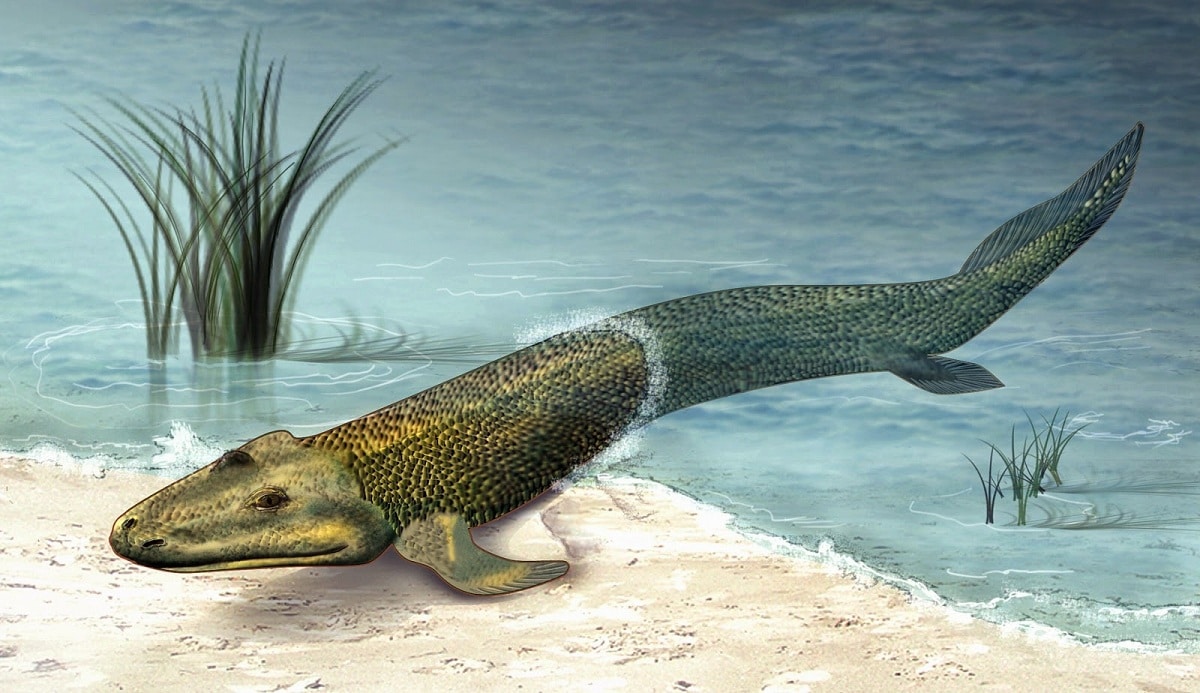
The Paleozoic era has 5 subdivisions divided into periods in which various events of great biological and geological importance have occurred. Today we are going to talk about Devonian period. This period lasted approximately 56 million years of which our planet underwent a large number of changes, especially at the level of biodiversity, but also at the geological level.
In this article we are going to focus on telling you the characteristics, climate, geology, flora and fauna of the Devonian period.
Key features

This period began approximately 416 million years ago and ended approximately 359 million years ago. As always, we must comment that both the beginning and the end of a period is not so exact due to the lack of such precise information. This is the fourth period of the Paleozoic era. After the Devonian period comes the carboniferous period.
During this period of time there was a broad development of various groups of animals, especially those that inhabit marine environments. There were also important changes in terrestrial habitats as large plants and the first terrestrial animals appeared. Despite being a period in which life was diversifying to great levels, the Devonian also has a rather dubious reputation for being the period of time in which a large number of animal species became extinct. There is talk of more or less the extinction of 80% of life on our planet.
During this period, a mass extinction event occurred that made many of the species that inhabited at that time disappear from the face of the earth permanently. At the same time that we have the Devonian period, it is divided into different epochs. Let's see what these times are:
- Lower Devonian. It is formed in turn by 3 ages called Lochkovian, Pragian and Emsian.
- Middle Devonian: spanned two ages called Eifelian and Givetian
- Upper Devonian: it was constituted by two cities called Frasniense and Fameniense.
At the end of this period, one of the global mass extinction events occurred that caused a great loss of species, mainly those that inhabit the seas of the tropical part. The species that were most affected were corals, fish, crustaceans, mollusks, among others. Fortunately, many of the species that lived in terrestrial ecosystems were not affected by the mass extinction phenomenon. Therefore, the conquest of the terrestrial habitat can continue its course without too many problems.
Devonian geology

This period was marked by a great activity of the tectonic plates. There were several touches that formed new supercontinents such as the formation of Laurasia. The supercontinent known by the name of Gondwana was also formed and maintained. It is a large area of land that occupied all the space on the planet's south pole.. The northern part of the Earth was occupied by Siberia and the vast and deep Panthalassa Ocean. The entire ocean covered almost the entire northern hemisphere.
From the point of view of orogeny, this is a period in which various processes of formation of mountain ranges began, among which we have the Appalachian Mountains.
Devonian period climate
The climatic conditions that existed on our planet during the Devonian period were relatively stable. The predominance of global temperatures was hot and humid with abundant rains. However, arid and dry climates existed within large continental masses.
The average global temperature is around 30 degrees. As time progressed, a slight progressive decrease was experienced, reaching an average of 25 degrees. Later at the end of the Devonian period, temperatures decreased to such an extent that it occurred to one of the glaciations that has transformed our planet throughout history.
Life

During this period there were significant changes in relation to living beings. One of these most important changes was the definitive conquest of terrestrial ecosystems. Let's first analyze the flora.
Flora
In the pre-Devonian period, small vascular plants such as ferns had already begun to develop. These small ferns were acquiring greater development in different aspects, the most representative being their size. Other plant forms also appeared on the surface of the continents, such as lycopodiophytes. There are some plant species that could not adapt to the environmental conditions and ended up becoming extinct.
The proliferation of terrestrial plants brought as a consequence an increase in the increase of oxygen that existed in the atmosphere since plants carried out the photosynthesis process thanks to the pigments of chlorophyll. Thanks to this, it was much easier for terrestrial life to spread through terrestrial ecosystems.
Fauna
Finally, the fauna diversified to a great extent during the Devonian period starting with fish. It is one of the groups that experienced the greatest growth at the population level. Many call this period the age of fish. Species were developed and diversified such as Sarcopterygios, Actinopterygians, Ostracoderms and Selacians.
Causes of the extinction of the Devonian period

As we have mentioned before, at the end of this period a process of mass extinction occurred. It mainly affected the living forms of the seas. The extinction lasted approximately 3 million years. The causes of this mass extinction were the following:
- Meteorites
- Critical decline in oxygen levels in the seas
- Global warming
- Plant growth or mass
- Intense volcanic activity
Among the reasons we have given there may be doubts about the growth of plants. During this period, large vascular plants developed, being an average of about 30 meters high on the surface of the continents. This had a negative consequence creating an imbalance in environmental conditions, since these plants will begin to absorb a large amount of water and nutrients from the soil that could have been used by other living beings. This caused a loss of biodiversity.
I hope that with this information you can learn more about the Devonian period.
Much good information!